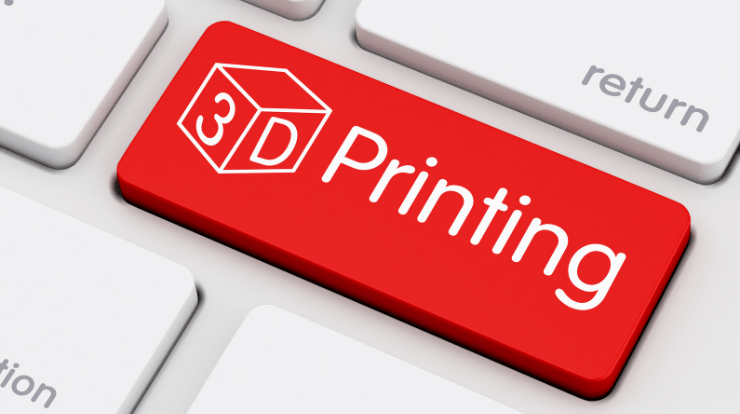The maritime and shipbuilding industry plays a pivotal role in the United Arab Emirates (UAE), a nation with a rich maritime history and a strategic location along major trade route. The adoption of 3D printing technologies in this industry is ushering in a new era of innovation and efficiency.
In this discussion, we will explore the implications of 3D printing in the UAE’s maritime and shipbuilding industry, highlighting its impact on design and prototyping, parts manufacturing, vessel maintenance, sustainability, and competitiveness.
1. Advanced Design and Prototyping
a. Streamlined Design Iterations
3D printing accelerates the design and prototyping phase of shipbuilding in the UAE. Ship designers and engineers can quickly iterate through multiple design concepts, experimenting with various forms, shapes, and structural configurations. This agility in design development reduces time-to-market and enhances the overall efficiency of the shipbuilding process.
b. Complex and Customized Components
The maritime industry often demands complex and highly specialized components. 3D printing UAE allows for the creation of intricate parts and prototypes that were previously challenging to manufacture using traditional methods. In the UAE, this capability enables shipbuilders to create custom-designed components tailored to specific vessel requirements, including hull shapes, propellers, and interior structures.
2. On-Demand Parts Manufacturing
a. Reduction in Lead Times
One of the notable implications of 3D printing in the UAE’s maritime industry is the reduction in lead times for manufacturing critical components. Traditional manufacturing processes involve lengthy procurement and production cycles for specialized parts, resulting in downtime and delays. 3D printing allows for on-demand manufacturing, ensuring that required parts are readily available, thus minimizing vessel downtime.
b. Supply Chain Resilience
By embracing 3D printing, the UAE’s maritime industry can enhance its supply chain resilience. The ability to produce spare parts locally reduces dependence on international suppliers, making the industry more resilient to disruptions such as geopolitical tensions or global shipping delays.
3. Enhanced Vessel Maintenance
a. Rapid Repairs
Vessel maintenance is a crucial aspect of the maritime industry, ensuring the safety and operational efficiency of ships. 3D printing facilitates rapid repairs by enabling the creation of replacement parts and components on-site. In the UAE, this means that vessels can be serviced and repaired quickly, reducing downtime and operational costs.
b. Cost-Efficiency
The cost-efficiency of 3D printing for maintenance extends beyond rapid repairs. It also reduces the need for stockpiling large inventories of spare parts, which can be costly and logistically challenging. By manufacturing parts on-demand, shipowners and operators in the UAE can optimize their maintenance budgets.
4. Sustainability and Materials Innovation
a. Environmentally Friendly Materials
Sustainability is a growing concern in the maritime industry, and 3D printing offers solutions. The UAE’s maritime industry can explore the use of environmentally friendly materials, such as recycled plastics or biodegradable composites, for 3D printing. This aligns with the UAE’s commitment to reducing its environmental footprint.
b. Reduced Material Waste
Traditional shipbuilding and manufacturing processes often generate significant material waste. In contrast, 3D printing is an additive manufacturing technique, which means that material is deposited layer by layer. This minimizes material waste, reduces environmental impact, and contributes to sustainability efforts in the UAE’s maritime industry.
5. Competitiveness and Innovation
a. Global Competitiveness
By embracing 3D printing, the UAE’s maritime and shipbuilding industry can enhance its global competitiveness. The ability to produce high-quality, customized vessels and components efficiently positions UAE shipbuilders as leaders in the market. This competitive advantage attracts international clients and bolsters the nation’s maritime industry on a global scale.
b. Fostering Innovation
3D printing fosters a culture of innovation within the UAE’s maritime industry. It encourages shipbuilders and designers to explore new design concepts, materials, and manufacturing techniques. This innovative spirit not only improves the industry’s overall efficiency but also fuels advancements in vessel design and performance.
6. Skills Development and Collaboration
a. Technological Skills
The adoption of 3D printing in the maritime industry necessitates skills development. In the UAE, this presents an opportunity to train a skilled workforce proficient in 3D printing technologies, from design to operation. This investment in human capital ensures that the industry remains at the forefront of technological advancements.
b. Collaboration with Technology Providers
The UAE’s maritime industry can collaborate with technology providers and research institutions to further develop 3D printing capabilities. These partnerships can lead to the creation of cutting-edge solutions and materials tailored to the unique demands of the maritime sector.
Conclusion
3D printing technologies are reshaping the maritime and shipbuilding industry in the United Arab Emirates, offering a myriad of benefits that encompass design and prototyping, parts manufacturing, vessel maintenance, sustainability, competitiveness, skills development, and collaboration.
The implications of 3D printing extend beyond efficiency gains; they represent a transformational shift in how vessels are designed, built, and maintained. As the UAE continues to embrace these technologies, its maritime industry is poised for continued growth, innovation, and global competitiveness, while contributing to the nation’s sustainability goals.



